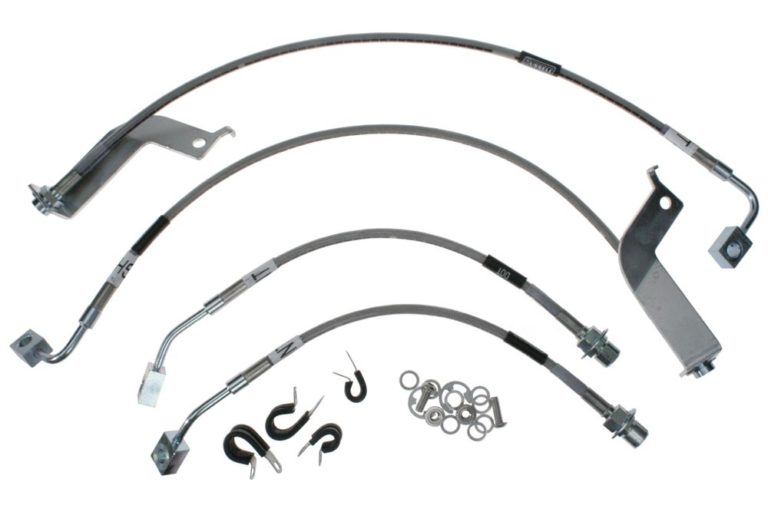The focus of many Mustang enthusiasts when it comes to modifications usually surrounds either increasing power, improving traction or adding style. But one area of a Mustang often overlooked is with the brake system. Being able to stop quickly is just as important, and sometimes more so, than being able to accelerate quickly, especially in the case of road course and autocross racing.
Of course, when talking about upgrades to your brake system, it’s easy to go straight to a new set of pads, or larger rotors and matching calipers, and those will certainly help improve your overall braking capabilities. But the brake lines themselves also contribute to the overall effectiveness of your braking system, especially the soft lines.
A Quick Overview of the Braking System
The braking system of your Mustang consists of several components. We won’t go into deep detail on how a brake system works in this article, but suffice to say that your brake system is essentially a hydraulic system, with a pump that forces brake fluid through lines and hoses. When you press on your brake pedal, brake fluid is forced through the lines and hoses and to the brake calipers, clamping down on your rotors to stop your vehicle.
Ensuring a consistent amount of pressure in the brake system is critical to your brakes working correctly and efficiently. To help maintain consistency, the braking system in your Mustang mostly uses hard, stainless steel lines for the brake fluid to travel in. However, there are locations where a rigid brake line will not work, such as the connection to the brake calipers themselves. In these locations, flexibility and movement are needed in order to account for the travel in wheel and suspension expected while driving. Because of this, many manufacturers choose to install flexible rubber hoses. These hoses provide the flexibility needed, but come at a cost in performance and consistency. As pressure is applied, overtime and during extreme driving conditions, these rubber hoses are susceptible to expansion. This expansion creates an inconsistent brake behavior and lessens their effectiveness.
So how can you combat this? By installating a set of stainless steel braided brake lines, you are replacing the factory rubber lines which have a significant amount of flexibility and “give”, and instead, using lines that still maintain the amount of flexibility needed to account for wheel and suspension travel, but without the expansion that the rubber lines are prone to. This causes a much more consistent pressure in your brake system, leading to more consistent braking behavior and performance.
Installing Stainless Steel Braided Brake Lines
Installing stainless steel brake lines is relatively easy as well. If you are capable of bleeding your brake system, you can definitely replace these lines yourself. If you are planning on bleeding your brakes, or performing any modification to the rest of your brake system that would require a brake bleed, such as installing new brake calipers, consider installing a set of stainless steel braided brake lines at the same time.
Full stainless steel braided brake line kits for most Mustangs will include 5 lines – two for each of the front brakes, two for each of the rear brakes, as well as a fifth line that connects the main hard brake line from the chassis to the hard brake line on the rear axle.
Each line is fastened using B-nuts, so removing the factory lines and installing the stainless steel brake lines is just a matter of loosening those nuts, removing the factory lines (they may be mounted to the suspension or chassis as well), and then installing the new stainless steel braided lines. Once installed, be sure to bleed your Mustang’s brake system to remove the air that will be introduced when installing the new stainless steel braided brake lines.
